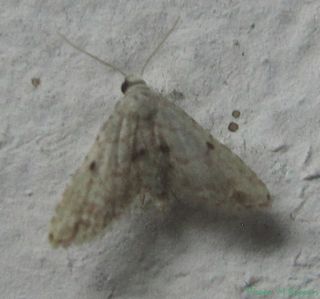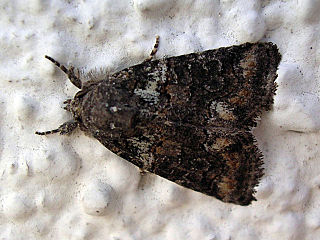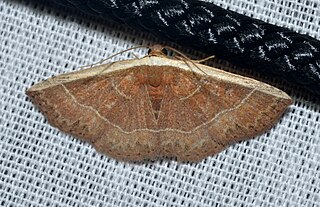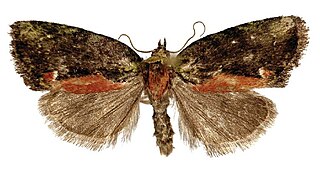
Agrotis is a genus of moths of the family Noctuidae. The genus was erected by Ferdinand Ochsenheimer in 1816. A number of the species of this genus are extinct.

Hadenini is a tribe of cutworm or dart moths in the family Noctuidae. There are more than 140 genera and 1,000 described species in Hadenini, found worldwide.

Agrochola is a genus of moths of the family Noctuidae. The genus was erected by Jacob Hübner in 1821.

Araeopteron is a genus of moths of the family Erebidae. The genus was erected by George Hampson in 1893.

Bryophila is a genus of moths of the family Noctuidae. The genus was described by Treitschke in 1825.

Cryphia is a genus of moths of the family Noctuidae. The genus was erected by Jacob Hübner in 1818.

Dasypolia is a genus of moths of the family Noctuidae. The genus was erected by Achille Guenée in 1852.

Drasteria is a genus of moths in the family Erebidae.

Hydraecia is a genus of moths of the family Noctuidae.

Lygephila is a genus of moths in the family Erebidae. The genus was erected by Gustaf Johan Billberg in 1820.
Mimachrostia is a genus of moths of the family Erebidae first described by Shigero Sugi in 1982. It was formerly placed in the family Noctuidae.

Oruza is a genus of moths of the family Erebidae erected by Francis Walker in 1862.

Schrankia is a genus of moths of the family Erebidae. It was described by Jacob Hübner in 1825.

Stenoloba is an East Asian genus of moths of the family Noctuidae. The genus was described by Staudinger in 1892.
Brachygalea kalchbergi is a moth of the family Noctuidae. The species was first described by Otto Staudinger in 1897. It is known only from Israel and Jordan.

Hypenodes humidalis, the marsh oblique-barred, is a moth in the family Erebidae. The species was first described by Henry Doubleday in 1850. It is found in most of Europe and across the Palearctic to Siberia.
Hypenodes kalchbergi is a species of moth in the family Erebidae. It was described by Otto Staudinger in 1876. It is found in Slovenia, the former Yugoslavia and on Sicily.
Hypenodes orientalis is a species of moth in the family Erebidae. It was described by Staudinger in 1901. It is found in Turkey, the Near East, Armenia and the southern Caucasus.

The Hypenodinae are a subfamily of moths in the family Erebidae. Adult moths of most species of this subfamily lack small, simple eyes near the large, compound eyes and have quadrifine (four-veined) hindwing cells. The micronoctuid moths are an exception because they possess simple eyes and bifine (two-veined) hindwing cells.














